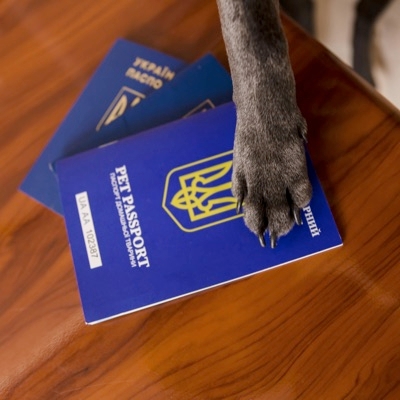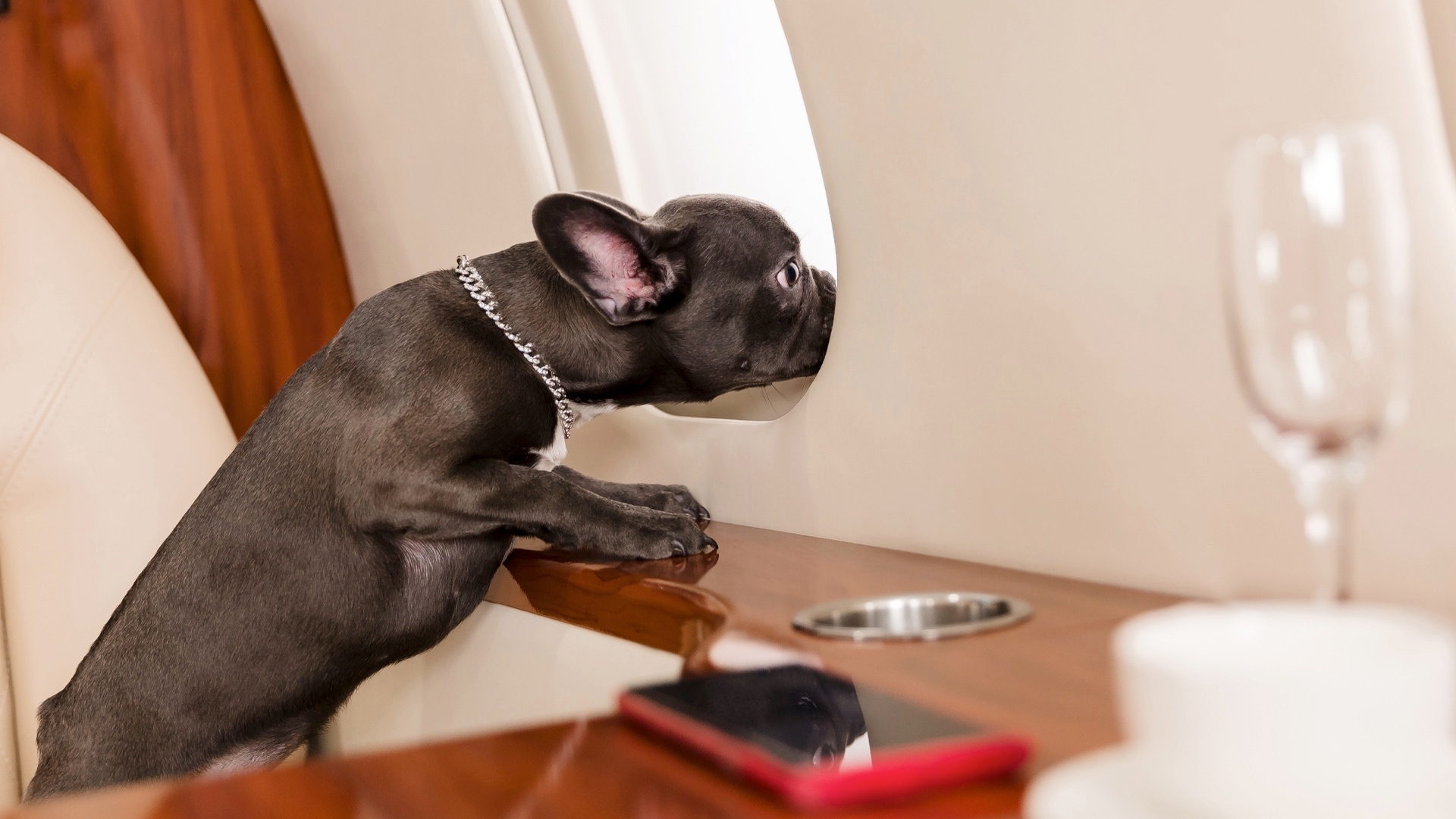Traveling By Plane With Your Pet:
Summary:
If you've decided to travel with your pet. Learn what you will need to know to prepare your pet for air travel. Does your airline have restrictions barring your pet? Do you need a Certificate of Veterinary Inspection? Is your pet old enough? If you have questions, we have answers.


What Can I Do To Prepare My Pet For Air Travel?
The following preparations will help both you and your pet:
- Check with airlines because they may have restrictions on breed and size.
- Most airlines also require a Certificate of Veterinary Inspection (health certificate) issued within 10 days of travel.
- Federal regulations require pets to be at least 8 weeks old and they should be weaned at least 5 days before flying.
- Talk to your veterinarian about feeding schedules. It is usually recommended that pets fly on an empty or nearly empty stomach. The pet's age, dietary needs and size, and the time and distance of the flight should all be taken into consideration.
What Is The Best Way To Choose Flights Appropriate For My Pet?
The following will help you choose flights that are appropriate:
- Reservations should be made for you and your pet at the same time because airlines often limit how many pets are allowed on each flight.
- Try to book a non-stop flight and avoid plane changes when possible.
- When possible, avoid flying during busy holidays.
- In warm weather, choose early morning or late evening flights.
- In colder weather, choose mid-day flights.
- Reconfirm flight arrangements the day before you leave to minimize the chance of unexpected changes.
What Should I Do On The Day Of The Flight?
On the day of your flight:
- Arrive to the airport early so you have time to exercise your pet.
- If your pet will be in the cabin, check in as late as possible to reduce the time your pet will have to wait in the terminal.
- Place your pet in its crate and pick it up as soon as you arrive at your destination.
- Notify the flight attendant that your pet is in cargo hold.
What Is An Acclimation Certificate?
This is a form your veterinarian may consider signing that will waive the low-temperature federal regulation for animals traveling in the cargo hold, as stated in the Animal Welfare Act.
- If the airline cannot guarantee that the animal will not be in temperatures lower than 45°F (7.2°C) for more than 45 minutes when the animal is moved between the terminal and the plane, or for more than 4 hours when the pet is in a holding facility, and you don't have an acclimation certificate, the airline will not let your pet fly.
- Airlines cannot ship animals if they will be exposed to temperatures higher than 85° F (29.5° C) for more than four consecutive hours while in animal holding areas of airport terminals, or for more than 45 minutes while being transferred between the aircraft and the animal holding area.
Do I Need To Get An Acclimation Certificate?
Always check with the airline and your veterinarian well in advance. If your pet is traveling in the cargo hold and temperatures at the departure or destination airport are expected to be below 45°F, your pet definitely will need an acclimation certificate in order to travel. Some airlines may require acclimation certificates even when temperatures are not expected to be below 45°F. Note that not all animals are appropriate to have an acclimation certificate issued, so your veterinarian may not issue an acclimation certificate even if an airline requires it for your pet to travel.
- Acclimation certificates are written at the discretion of the veterinarian, and are based on the veterinarian's assessment of the pet's health and the temperatures your pet is accustomed to.
- There are no acclimation certificates that allow pets to be shipped when they will be exposed to temperatures above 85°F (29.5°C) for more than four consecutive hours while in animal holding areas of terminals, or for more than 45 minutes while being transferred between the aircraft and the animal holding area.
Should I Tranquilize Or Sedate My Pet For Long Flights?
Tranquilization reduces anxiety and induces a sense of tranquility without drowsiness, while sedation has a more profound effect and produces drowsiness and hypnosis. In most cases, it’s not recommended that pets be sedated for air travel. However, it may benefit some animals to be tranquilized for air travel. Discuss this with your veterinarian well in advance of your expected travel date. If your veterinarian recommends tranquilization for your pet, be sure to follow the veterinarian’s exact dosing recommendation. In many cases, the same drug used for tranquilizing can result in sedation at higher doses.
Airlines may require a signed statement that your pet has not been sedated prior to flying.
If you are considering traveling with a short-nosed dog, visit our FAQs about short-nosed dogs and air travel for more information.
What Are Crates Approved For Air Travel?
It is best to purchase an approved crate prior to travel (at the airline or local pet store) so you have time to let your pet get used to the crate and be comfortable. If your pet is small and can fit comfortably in an airline approved carrier, your pet may be able to travel with you in the cabin.
Approved crates should:
- Be large enough for your pet to stand (without touching the top of the cage), turn around and lie down
- Be strong and free of interior protrusions, with handles or grips
- Have a leak-proof bottom with plenty of absorbent material
- Be ventilated on opposite sides, with exterior knobs and rims that will not block airflow
- Be clearly labeled with owners name, home address and phone number, destination contact information and a sign stating "Live Animals" with arrows showing which way is upright


